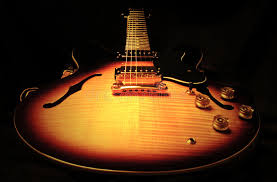Search Topic
Guitar the Western fretted instrument
Guitar, the beginning and journey

One of the most popular modern western fretted instruments is Guitar. The 16th century probably originated in Spain. Steel strings first became widely available around 1900. In the early 1920’s designer, the great change began with the creation of the archtop guitar is usually credited to Orville Gibson. He modified the archtop “jazz” into the f-holes, floating bridge, and cello-type tailpiece. This is widely played in the folk and popular music of many countries.
Types of Guitars
Acoustic Guitar
This is made of hollow wood with a large soundhole. Typically have wide, flat necks that allow the guitar strings to be spaced fairly far apart. It produces sound via vibrating strings. Initially developed by Martin Guitars for the Oliver Ditson Company in 1916.
Electric Guitar
With an external amplifier, this type of guitar is needed to accomplish the best power pack performance. This creates sound signal through the strings vibrating strings over a pickup, vibration to audio signal & simultaneously audio signals are fed into an amplifier which projects the musical performance at a wide range of volumes. It originated in the USA.
Bass Guitar
This type of guitar also originated in the USA. It’s specialized for the lowest pitch. Leo Fender and George Fullerton have developed the first mass-produced electric bass guitar in 1950. It is still renowned as precision bass (P-Bass). Traveling rock musicians just loved it.
Construction
Handedness
Guitars come in both right-handed and left-handed varieties. Modern guitars are mostly accessible by both categories of person in either way. The majority person used right-handed guitars, whereas a few left-handed persons used to choose opposite-handed (mirror) instruments. Others choose to play in a standard-handed manner.
Basic Components
The basic components of any guitar is Headstock, Neck, Frets, Truss rod, Body & last but not least strings.
Headstock, It’s set at the top of the neck (opposite the body) where the tuning machines and nut are installed. Nut – It is a notched piece of plastic or bone installed where the headstock meets the fretboard of this. The nut has notches where the strings are seated. These notches keep the strings aligned on the fretboard and play a role in the string height. The neck is the long, thin piece of wood between the headstock and the body where you’ll find the fretboard, frets, and truss rod. Frets, Almost all guitars have frets, which are metal strips. It’s the metal strips running across the fretboard. A truss rod is a long, adjustable piece of metal that is mounted inside the neck and runs the length of the neck, helping to keep it from bending under the tension of the strings. Body. The body of the guitar is influenced largely by the tonal characteristics of the instrument. Cutway, Upper bout, Lower bout, Pickguard, Pickup, Pickup Selector Switch are the parts of a guitar body. Strings are consist of a thin core with wire wrapped around it. The thicker the string or core, the lower the pitch.
The development of the electric guitar in America, and its rapid acceptance in jazz. Became a part of the global to local musical culture. the classical guitar is an equal instrument in Western concert halls.








